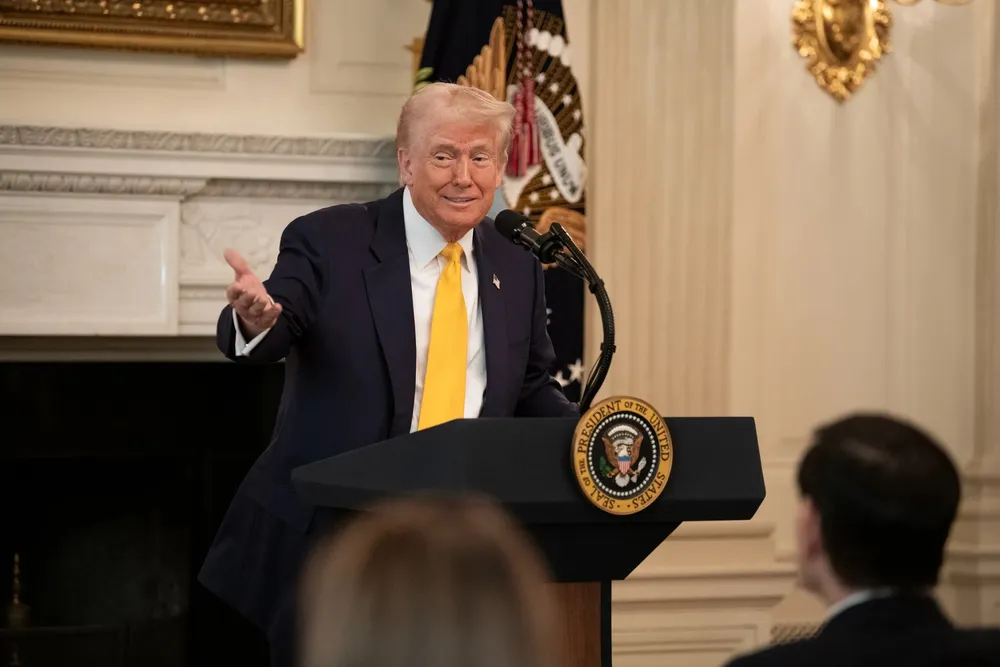Reality check: why renewables could have a growth path under Trump after all
Several projects, one Canadian owned, are progressing on federal lands despite Presidential rhetoric, signaling flexibility amid the realities of surging demand

It may not be gloom and doom after all for renewable energy development on US public lands under President Donald Trump.
After several months of policy assessments and uncertainty, his administration has begun facilitating utility-scale geothermal, solar and related transmission development.
Onshore wind has also been a frequent Trump target. He has peddled false claims that turbines cause cancer, destroy real estate values, and short-circuit home appliances when idle. To a lesser extent, solar has taken his fire as an uneconomic power source compared with coal and natural gas.
The directive suggested it was temporary, at least for onshore wind, and would be re-evaluated pending completion of an assessment of leasing and permitting practices.
In response to the memorandum, the Department of Interior (DoI), which administers federal lands in the country’s heartland through Bureau of Land Management (BLM), issued an order extending Trump’s prohibition to include any renewable energy technology.
With several dozen projects at risk, the move was particularly alarming for geothermal, solar, and transmission developers, which are far more reliant on locations under BLM oversight than wind. About 95% of planned wind generation capacity is on private property.
The agency’s recent moves suggest the White House, while clearly favouring fossil fuels, will allow certain renewable technologies on federal lands to help fill forecast historic US electric power demand later this decade.
As part of BLM’s recent approval of Leeward Renewable Energy’s 270MW Elisabeth solar array with 300MW of energy storage capacity in Arizona, Ray Castro, field manager for the agency in Yuma, said: “Providing reliable, domestically sourced energy for the American public is a top priority.”
That statement could have been written by clean energy lobby groups in Washington, DC, who have made exactly that argument as part of an ongoing effort to preserve their long-term tax credits in the 2022 Inflation Reduction Act.
Also notable is that Leeward is owned by OMERS, a large pension fund in Canada, which has drawn Trump’s ire for refusing his demand to become the 51st US state and knuckle under to his trade threats.
Even with bilateral ties at their lowest level in decades, the Trump energy team, in this case, took a pragmatic approach toward Canadian investment, while also appearing to acknowledge fossil fuels alone cannot supply enough electrons to meet future demand.
BLM also gave the green light for construction of a transmission line that will bring 117MW of solar energy to southern California.
In another decision, it completed a draft Environmental Assessment (EA) for the 300MW Pinyon Solar project with up to 300MW of energy storage capacity and associated 500kV dedicated transmission line in Arizona. The array is being developed by a subsidiary of Avantus.
The agency also has environmental reviews “in progress” for a further 8.5GW of solar projects in Arizona and Nevada. An EA determines whether a full Environmental Impact Statement (EIS) is necessary for a project.
Both the EA and EIS are mandated by the National Environmental Policy Act (NEPA), the landmark 1969 law, that requires federal agencies to evaluate the environmental effects of their actions.
She said BLM’s draft EIS publication data is September, “pending approval from BLM headquarters and the Department of the Interior.”
The project’s acreage on BLM lands from NextEra’s updated Plan of Development is 79,263 acres (320.7 sq km). It would employ 213 GE Vernova turbines.
BLM's office there is also responsible for doing an environmental review of BayWa's proposed 1.3GW Maestro wind project on agency lands in Wyoming, but the German firm's subsidiary here asked for a 90-day pause in the process, according to Alderman.
Elsewhere, BLM approved a 20MW geothermal project and sold 14 leases to sector investors in the state of Utah for $5.7m.
(Copyright)